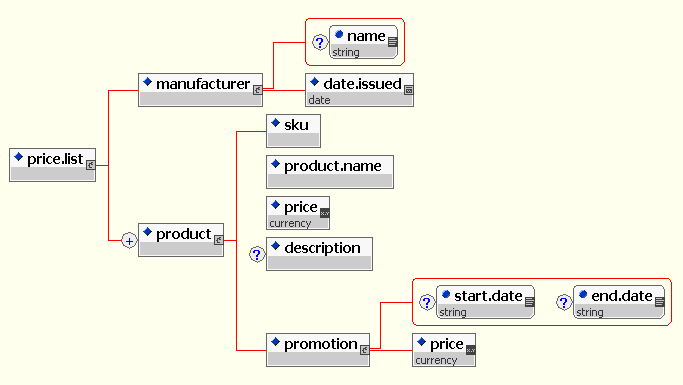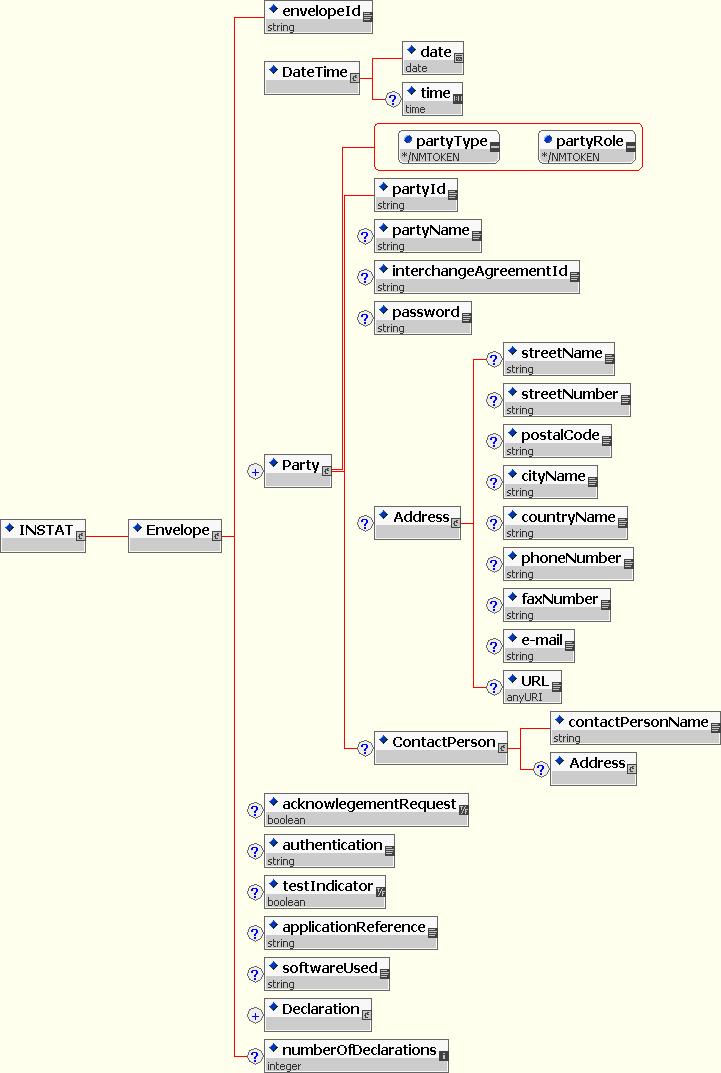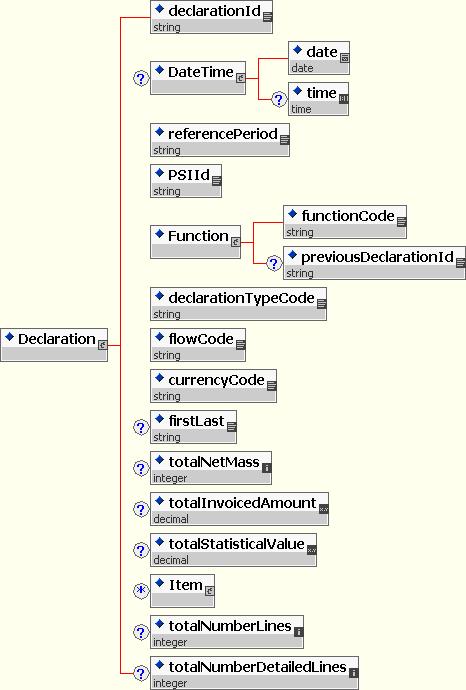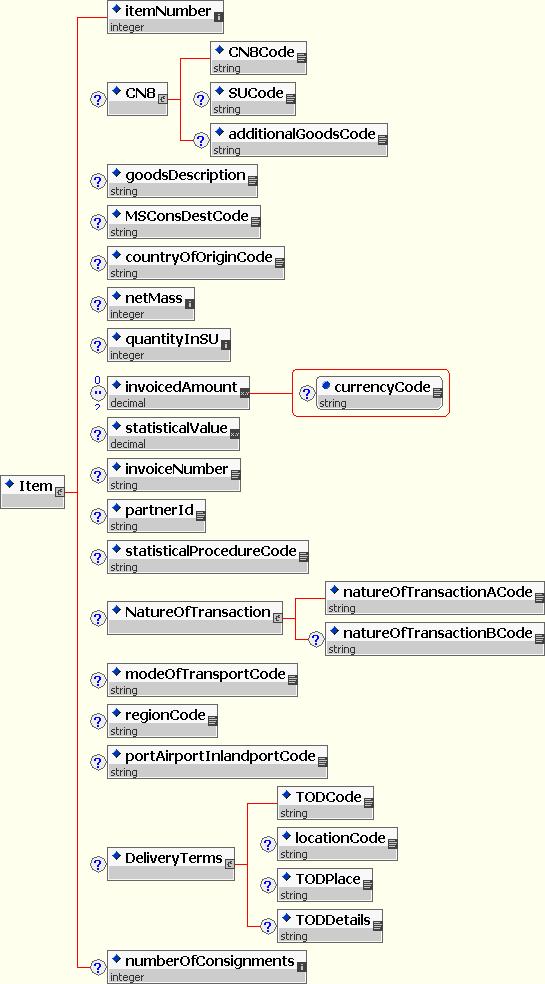|
Conventions and definitions of data types
The following example gives the conventions used to represent the elements,
attributes, types and occurrences.
Occurrences of elements and attributes are represented
by:
"nothing" meaning one and one time only, ? meaning zero or one time, * meaning zero or more times, + meaning one or more times. Elements contain other element(s) or like attributes,
they can have the following types: string data
type represents character strings in XML; boolean data type represents the set of literals
{true, false}; date is
represented by CCYY-MM-DD where CC represents the century,
YY the year, MM the month and
DD the day [ISO 8601]; time is
represented by hh:mm:ss where hh, mm, ss represent hour, minute and second respectively [ISO
8601]; integer is
represented by a finite-length sequence of decimal digits (#x30-#x39) with
an optional leading sign; if the sign is omitted, + is
assumed; anyURI is finite-length
character sequences, which result in strings which are legal URIs
according to [RFC 2396], as amended by [RFC 2732]; decimal is
represented by of a finite-length sequence of decimal digits (#x30-#x39)
separated by a decimal indicator; an optional leading sign is allowed; if
the sign is omitted, + is assumed. |



